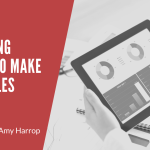 You may have the best content in the world, but if you don’t monetize it properly it won’t do you any good. That might sound harsh – but it’s true.
You may have the best content in the world, but if you don’t monetize it properly it won’t do you any good. That might sound harsh – but it’s true.
Content monetization isn’t difficult. That said, I see a lot of content creators making easily avoidable mistakes with content monetization. I don’t want that to happen to you.
So, in this post, I’ll look at some of the most common content monetization mistakes and tell you how to avoid them.
Mistake: Limiting Yourself to One Monetization Model
We all need to start somewhere. In other words, we all start with one monetization model. But, if you’ve been in the content creation business for a while and you’re still using only one monetization method, then the chances are very good that you’re not earning as much as you should be.
The problem with using only one monetization model is that you’ll be in real trouble if it stops delivering the returns you need. It’s the monetization equivalent of putting all your eggs in one basket.
Solution: Diversify Your Monetization
The solution is obvious here. When you monetize content, you should always use more than one model. For example, you might write a blog post and monetize it with AdSense ads. You should also consider linking to your own affiliate products.
Another option is to get advertisers to sponsor content on your site or to rent out ad space yourself. You can (and should) layer monetization methods by including a call to action that links to one of your digital products.
Mistake: Giving Too Much Space to Ads
Displaying ads on your website – whether they’re AdSense ads or ads that you sell directly – is a good way to earn money. However, there’s a fine line between advertising that helps you and advertising that hurts you. In fact, having too many ads on your site can negatively impact your user experience and even hurt your ranking on Google.
If you think about it, you’ll probably realize that you’ve left sites that had too many ads. When ads affect your audience’s ability to engage with the content on the page, they’re not doing you any favors. Some of your guests will hit the dreaded “back” button to find a site that’s easier to view.
Solution: Be Thoughtful About Ad Space
Ultimately, you’re the person who decides how much space to give to ads on your website. When you make that decision, you should always keep your audience in mind. The chances are good they won’t mind a few ads on the margin of your page – but be careful not to overdo it.
I suggest looking at a few successful sites that you enjoy reading to get a feeling for how much ad space they have. I think a good rule of thumb is to have no more than 2 ad spaces per page. They should be either at the top of the page or on the right margin. That way, your users will see them without feeling that they intrude on their experience reading or viewing your content.
Mistake: Breaking Up Content to Display More Ads
We all have our pet peeves, and content that’s broken up over several pages that are covered with ads is one of mine. I refuse to click through multiple pages to read something that could fit on a single page, only to be bombarded with ads.
All you need to do is check out the comments on this type of content to know that I’m right. Every time I see a slide show list posted, the comments reflect how irritating and unnecessarily time-consuming this type of content is. You don’t want your audience to be annoyed when they try to read your content.
Solution: Make Your Readers’ Experience Your Top Priority
The solution here is an easy one. Instead of thinking about how much money you’ll earn from all those ads, keep your audience’s feelings at the top of your priority list. You can still layer monetization without irritating the people who you most want to buy your products.
If a piece of content will fit on one page, put it on one page. (Note that I’m not saying you can never have a multi-page piece of content. However, there must be enough content to justify multiple pages.) Put one or two ads on the page and then get creative with other monetization methods.
Mistake: Using Too Many Ad Formats at Once
Earning money from ads is one of the easiest monetization methods. A common mistake I see is publishers testing out multiple ad formats at the same time. This is related to the “too many ads” issue but it deserves a separate mention.
Some ad formats are going to be more effective and profitable than others. However, testing more than one will dilute your results. It’s impossible to know how well one format is working if another format is pulling your audience’s focus.
Solution: Test One Ad Format at a Time
The best way to figure out which ad formats work for you is to test them one at a time. You’ll need to give them enough time to get a statistically significant result. I suggest at least a week for each format.
Once you’ve thoroughly tested a format, you should check your analytics and calculate the ROI for the format in question. Then, test the next format and compare your results. This might sound like a lot of work, but it’s the best way to maximize your ad revenue.
Mistake: Using the Same Ad Tags on Multiple Sites
Ad tags help you to attract ads that will appeal to the audience that’s most likely to visit your site. That’s important because you only earn money with PPC ads when a visitor to your site clicks the ads.
I know some publishers with multiple sites who think they can save time by using the same ad tag on several sites. The problem with that is that instead of saving time, they’re losing money. An ad tag that’s not tailored to a site’s audience is not going to be effective in terms of monetization.
Solution: Create Unique Ad Tags for Every Site
Creating ad tags takes a bit of time but in my opinion, it’s time well spent. If you have the time and money to set up multiple websites and monetize the content, you need to make the time to create unique ad tags for each site.
The good news is that unless your audience changes drastically, ad tags are a “one and done” task. So, yes, you’ll need to put in the work up front, but once it’s done, it’s done.
Conclusion
If you want your content monetization efforts to yield results and put money into your bank account, it’s important to recognize and avoid the money monetization mistakes I’ve outlined here. If you do, your content will generate a steady stream of income that can help you build your publishing empire.



